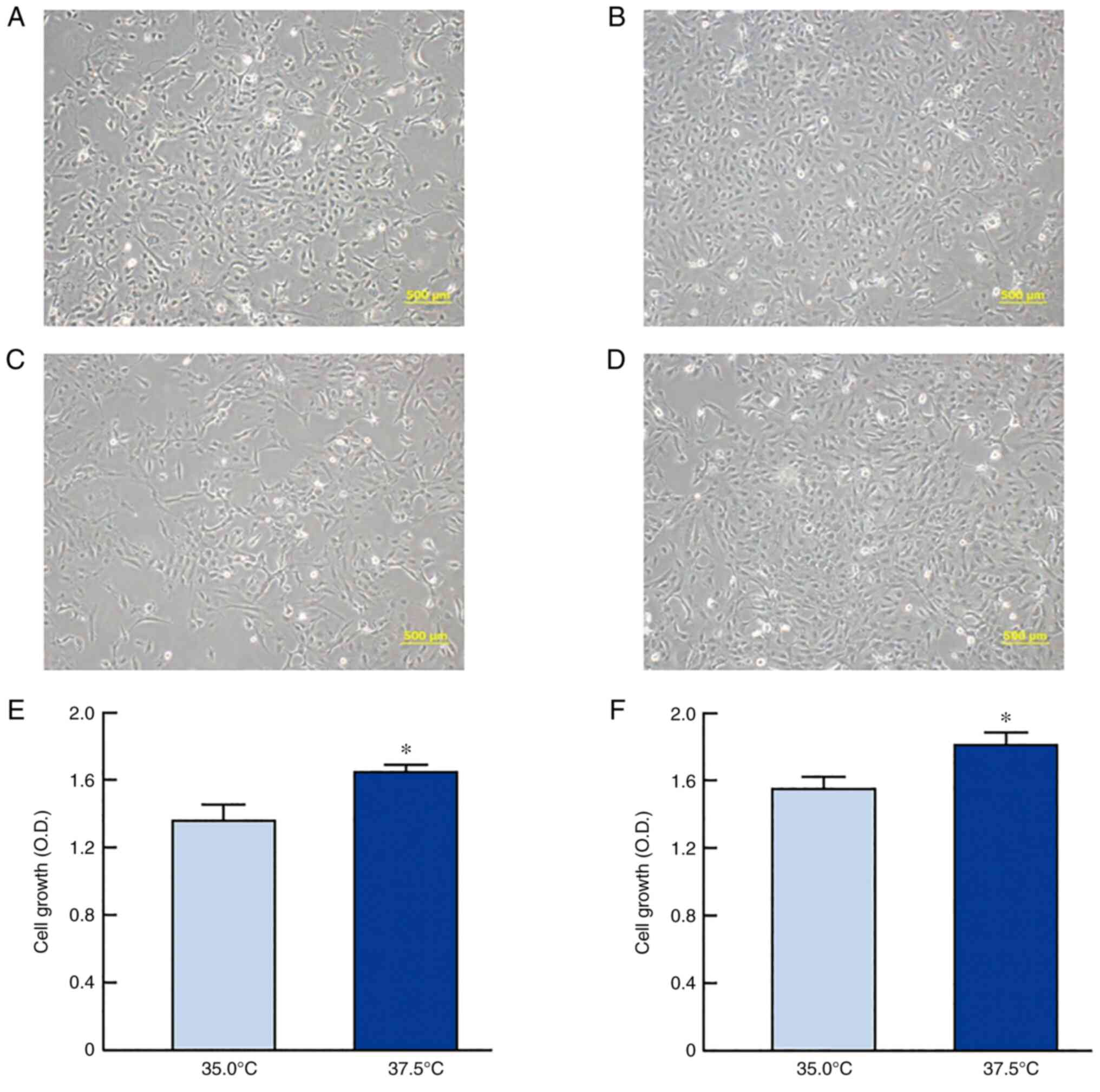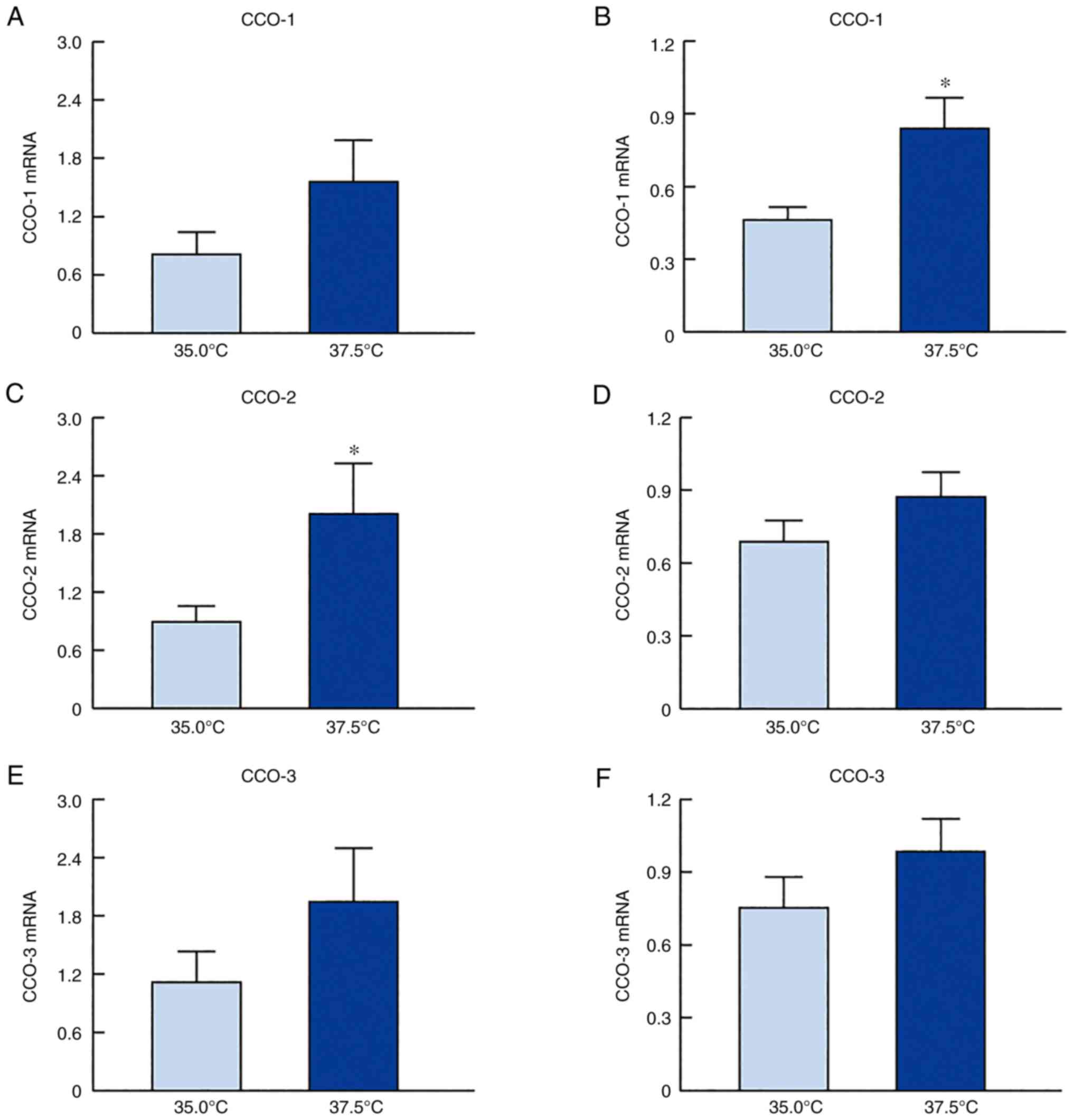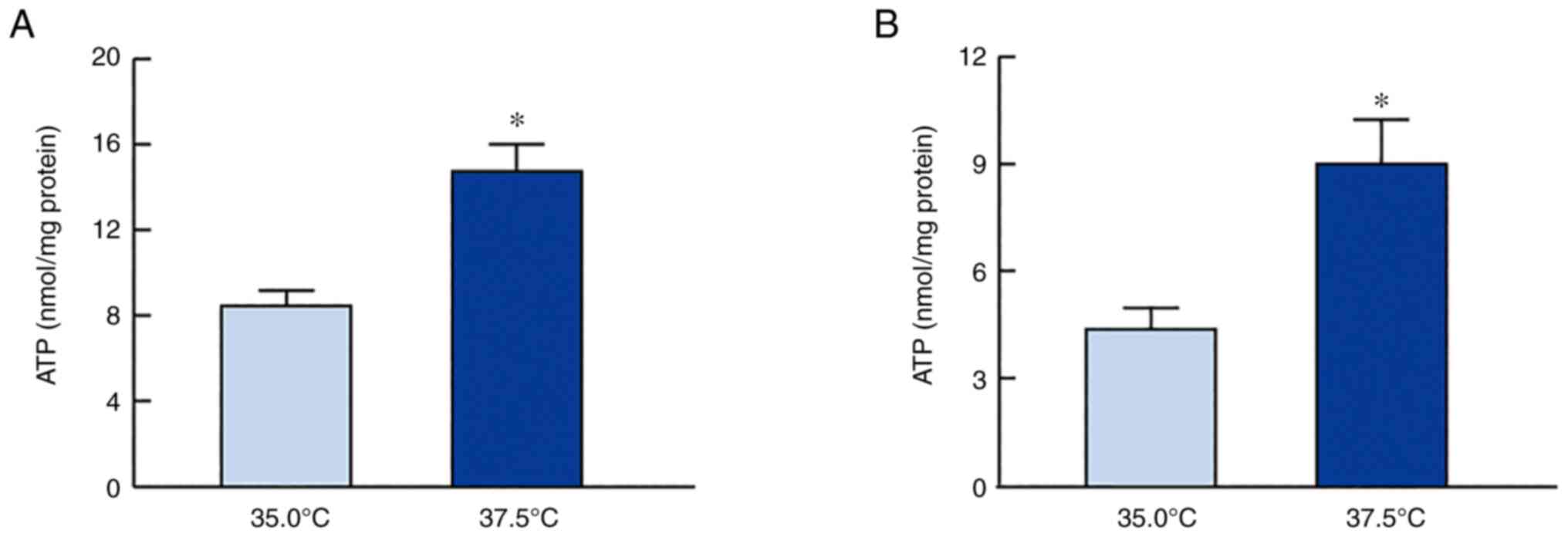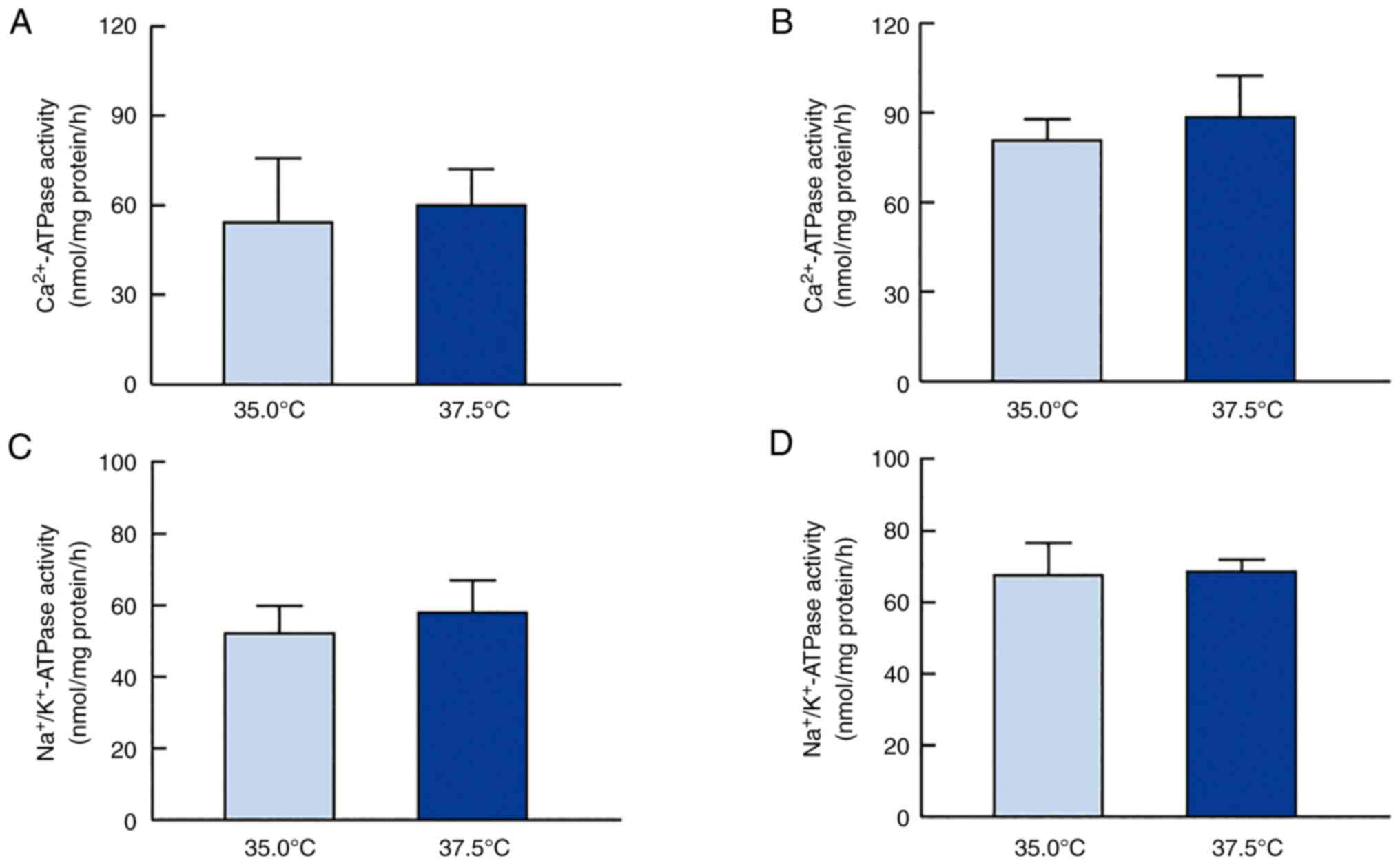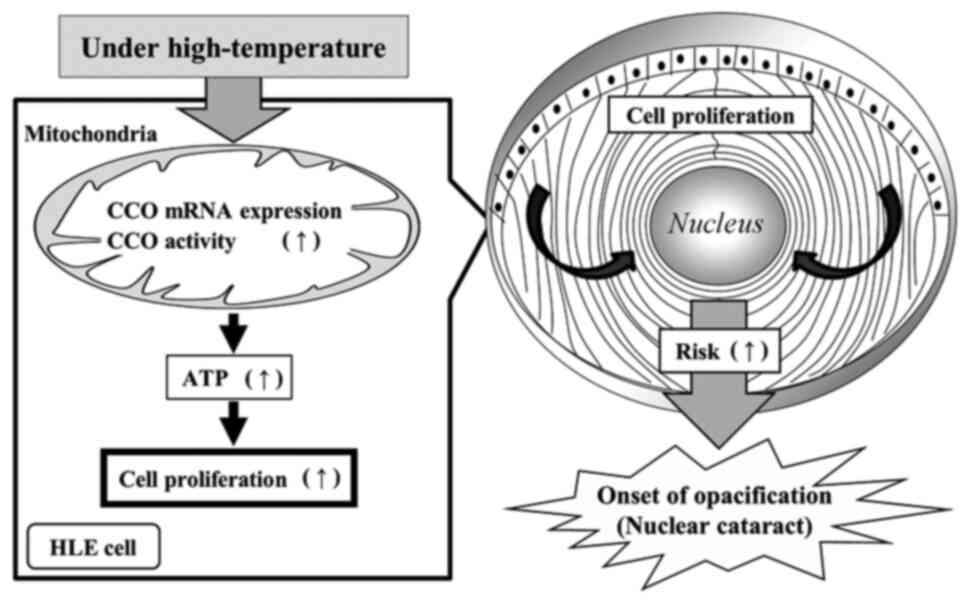|
1
|
World Health Organization (WHO), . Vision
2020: The RIGHT TO SIGHT. Global initiative for the elimination of
avoidable blindness. https://www.who.int/blindness/Vision2020_report.pdfWHO;
Geneva, Switzerland: December 1–2021
|
|
2
|
Moreau KL and King JA: Protein misfolding
and aggregation in cataract disease and prospects for prevention.
Trends Mol Med. 18:273–282. 2012. View Article : Google Scholar : PubMed/NCBI
|
|
3
|
Shenoy AM, Kothadia AD, Shabaraya AR,
Rajan MS, Viradia UM and Patel NH: Evaluation of cataract
preventive action of phycocyanin. Int J Pharm Sci Drug Res.
3:42–44. 2011.
|
|
4
|
GBD 2019 Blindness and Vision Impairment
Collaborators and Vision Loss Expert Group of the Global Burden of
Disease: Study, . Causes of blindness and vision impairment in 2020
and trends over 30 years, and prevalence of avoidable blindness in
relation to VISION 2020: The right to sight: An analysis for the
global burden of disease study. Lancet Glob Health. 9:e144–e160.
2021. View Article : Google Scholar : PubMed/NCBI
|
|
5
|
Vashist P, Talwar B, Gogoi M, Maraini G,
Camparini M, Ravindran RD, Murthy GV, Fitzpatrick KE, John N,
Chakravarthy U, et al: Prevalence of cataract in an older
population in India: the India study of age-related eye disease.
Ophthalmology. 118:272–278. e271–272. 2011. View Article : Google Scholar : PubMed/NCBI
|
|
6
|
Klein BE, Klein R and Lee KE: Incidence of
age-related cataract over a 10-year interval: The Beaver dam eye
study. Ophthalmology. 109:2052–2057. 2002. View Article : Google Scholar : PubMed/NCBI
|
|
7
|
Lee J, Kim MJ and Tchah H: Higher-order
aberrations induced by nuclear cataract. J Cataract Refract Surg.
34:2104–2109. 2008. View Article : Google Scholar : PubMed/NCBI
|
|
8
|
Miranda MN: The geographic factor in the
onset of presbyopia. Trans Am Ophthalmol Soc. 77:603–621.
1979.PubMed/NCBI
|
|
9
|
Sasaki K, Sasaki H, Jonasson F, Kojima M
and Cheng HM: Racial differences of lens transparency properties
with aging and prevalence of age-related cataract applying a WHO
classification system. Ophthalmic Res. 36:332–340. 2004. View Article : Google Scholar : PubMed/NCBI
|
|
10
|
Miyashita H, Hatsusaka N, Shibuya E, Mita
N, Yamazaki M, Shibata T, Ishida H, Ukai Y, Kubo E and Sasaki H:
Association between ultraviolet radiation exposure dose and
cataract in Han people living in China and Taiwan: A
cross-sectional study. PLoS One. 14:e02153382019. View Article : Google Scholar : PubMed/NCBI
|
|
11
|
Kodera S, Hirata A, Miura F, Rashed EA,
Hatsusaka N, Yamamoto N, Kubo E and Sasaki H: Model-based approach
for analyzing prevalence of nuclear cataracts in elderly residents.
Comput Biol Med. 126:1040092020. View Article : Google Scholar : PubMed/NCBI
|
|
12
|
Ayaki M, Ohde H and Yokoyama N: Size of
the lens nucleus separated by hydrodissection. Ophthalmic Surg.
24:492–493. 1993.PubMed/NCBI
|
|
13
|
Liu X, Liu Y, Zheng J, Huang Q and Zheng
H: Lens epithelial cell proliferation and cell density in human
age-related cataract. Yan Ke Xue Bao. 16:184–188. 2000.PubMed/NCBI
|
|
14
|
Yan XJ, Yu X, Wang XP, Jiang JF, Yuan ZY,
Lu X, Lei F and Xing DM: Mitochondria play an important role in the
cell proliferation suppressing activity of berberine. Sci Rep.
7:417122017. View Article : Google Scholar : PubMed/NCBI
|
|
15
|
Sun N, Youle RJ and Finkel T: The
mitochondrial basis of aging. Mol Cell. 61:654–666. 2016.
View Article : Google Scholar : PubMed/NCBI
|
|
16
|
Kauppila TES, Kauppila JHK and Larsson NG:
Mammalian mitochondria and aging: An update. Cell Metab. 25:57–71.
2017. View Article : Google Scholar : PubMed/NCBI
|
|
17
|
Sebastian D, Palacin M and Zorzano A:
Mitochondrial dynamics: Coupling mitochondrial fitness with healthy
aging. Trends Mol Med. 23:201–215. 2017. View Article : Google Scholar : PubMed/NCBI
|
|
18
|
Lenka N, Vijayasarathy C, Mullick J and
Avadhani NG: Structural organization and transcription regulation
of nuclear genes encoding the mammalian cytochrome c oxidase
complex. Prog Nucleic Acid Res Mol Biol. 61:309–344. 1998.
View Article : Google Scholar : PubMed/NCBI
|
|
19
|
Liang HL, Ongwijitwat S and Wong-Riley MT:
Bigenomic functional regulation of all 13 cytochrome c oxidase
subunit transcripts in rat neurons in vitro and in vivo.
Neuroscience. 140:177–190. 2006. View Article : Google Scholar : PubMed/NCBI
|
|
20
|
Nagai N, Mano Y, Otake H, Shibata T, Kubo
E and Sasaki H: Changes in mitochondrial cytochrome c oxidase mRNA
levels with cataract severity in lens epithelia of Japanese
patients. Mol Med Rep. 19:5464–5472. 2019.PubMed/NCBI
|
|
21
|
Ibaraki N, Chen SC, Lin LR, Okamoto H,
Pipas JM and Reddy VN: Human lens epithelial cell line. Exp Eye
Res. 67:577–585. 1998. View Article : Google Scholar : PubMed/NCBI
|
|
22
|
Yamamoto N, Takeda S, Hatsusaka N,
Hiramatsu N, Nagai N, Deguchi S, Nakazawa Y, Takata T, Kodera S,
Hirata A, et al: Effect of a lens protein in low-temperature
culture of novel immortalized human lens epithelial cells
(iHLEC-NY2). Cells. 9:26702020. View Article : Google Scholar : PubMed/NCBI
|
|
23
|
Sasaki H, Jonasson F, Shui YB, Kojima M,
Ono M, Katoh N, Cheng HM, Takahashi N and Sasaki K: High prevalence
of nuclear cataract in the population of tropical and subtropical
areas. Dev Ophthalmol. 35:60–69. 2002. View Article : Google Scholar : PubMed/NCBI
|
|
24
|
Nagai N and Ito Y: Dysfunction in
cytochrome c oxidase caused by excessive nitric oxide in human lens
epithelial cells stimulated with interferon-gamma and
lipopolysaccharide. Curr Eye Res. 37:889–897. 2012. View Article : Google Scholar : PubMed/NCBI
|
|
25
|
Nagai N and Ito Y: Adverse effects of
excessive nitric oxide on cytochrome c oxidase in lenses of
hereditary cataract UPL rats. Toxicology. 242:7–15. 2007.
View Article : Google Scholar : PubMed/NCBI
|
|
26
|
Nagai N, Liu Y, Fukuhata T and Ito Y:
Inhibitors of inducible nitric oxide synthase prevent damage to
human lens epithelial cells induced by interferon-gamma and
lipopolysaccharide. Biol Pharm Bull. 29:2077–2081. 2006. View Article : Google Scholar : PubMed/NCBI
|
|
27
|
IPCC (Intergovernmental Panel on Climate
Change): Summary for policymakers, . Climate Change 2013: The
Physical Science Basis, Contribution of Working Group I to the
Fifth Assessment Report of the Intergovernmental Panel on Climate
Change. Stocker TF, Qin D, Plattner GK, Tignor M, Allen SK,
Boschung J, Nauels A, Xia Y, Bex V and Midgley PM: Cambridge
University Press; Cambridge, UK: 2013
|
|
28
|
Nagaoka T, Watanabe S, Sakurai K, Kunieda
E, Watanabe S, Taki M and Yamanaka Y: Development of realistic
high-resolution whole-body voxel models of Japanese adult males and
females of average height and weight, and application of models to
radio-frequency electromagnetic-field dosimetry. Phys Med Biol.
49:1–15. 2004. View Article : Google Scholar : PubMed/NCBI
|
|
29
|
Walters EA, Brown JL, Krisher R, Voelkel S
and Swain JE: Impact of a controlled culture temperature gradient
on mouse embryo development and morphokinetics. Reprod Biomed
Online. 40:494–499. 2020. View Article : Google Scholar : PubMed/NCBI
|
|
30
|
Yamamoto N, Kato Y, Sato A, Hiramatsu N,
Yamashita H, Ohkuma M, Miyachi EI, Horiguchi M, Hirano K and Kojima
H: Establishment of a new immortalized human corneal epithelial
cell line (iHCE-NY1) for use in evaluating eye irritancy by in
vitro test methods. In Vitro Cell Dev Biol Anim. 52:742–748. 2016.
View Article : Google Scholar : PubMed/NCBI
|
|
31
|
Hiramatsu N, Nagai N, Kondo M, Imaizumi K,
Sasaki H and Yamamoto N: Morphological comparison between
three-dimensional structure of immortalized human lens epithelial
cells and Soemmering's ring. Med Mol Morphol. 54:216–226. 2021.
View Article : Google Scholar : PubMed/NCBI
|
|
32
|
Kadenbach B, Jarausch J, Hartmann R and
Merle P: Separation of mammalian cytochrome c oxidase into 13
polypeptides by a sodium dodecyl sulfate-gel electrophoretic
procedure. Anal Biochem. 129:517–521. 1983. View Article : Google Scholar : PubMed/NCBI
|
|
33
|
Kuhn-Nentwig L and Kadenbach B: Isolation
and properties of cytochrome c oxidase from rat liver and
quantification of immunological differences between isozymes from
various rat tissues with subunit-specific antisera. Eur J Biochem.
149:147–158. 1985. View Article : Google Scholar : PubMed/NCBI
|
|
34
|
Afkhami E, Hheidari MM, Khatami M,
Ghadamyari F and Dianatpour S: Detection of novel mitochondrial
mutations in cytochrome c oxidase subunit 1 (COX1) in patients with
familial adenomatous polyposis (FAP). Clin Transl Oncol.
22:908–918. 2020. View Article : Google Scholar : PubMed/NCBI
|
|
35
|
Wangpermtam P, Petmitr S, Punyarit P,
Klongnoi B and Sanguansin S: Down-regulation of mitochondrial NADH
and cytochrome b gene associated with high tumor stages in head and
neck squamous cell carcinoma. Arch Oral Biol. 99:107–112. 2019.
View Article : Google Scholar : PubMed/NCBI
|
|
36
|
Nakazawa Y, Donaldson PJ and Petrova RS:
Verification and spatial mapping of TRPV1 and TRPV4 expression in
the embryonic and adult mouse lens. Exp Eye Res. 186:1077072019.
View Article : Google Scholar : PubMed/NCBI
|
|
37
|
McMillan SN and Scarff CA: Cryo-electron
microscopy analysis of myosin at work and at rest. Curr Opin Struct
Biol. 75:1023912022. View Article : Google Scholar : PubMed/NCBI
|
|
38
|
Maeshima K, Matsuda T, Shindo Y, Imamura
H, Tamura S, Imai R, Kawakami S, Nagashima R, Soga T, Noji H, et
al: A transient rise in free Mg2+ ions released from
ATP-Mg hydrolysis contributes to mitotic chromosome condensation.
Curr Biol. 28:444–451. 2018. View Article : Google Scholar : PubMed/NCBI
|
|
39
|
Yoshitomi Y, Osada H, Satake H, Kojima M,
Saito-Takatsuji H, Ikeda T, Yoshitake Y, Ishigaki Y, Kubo E, Sasaki
H and Yonekura H: Ultraviolet B-induced Otx2 expression in lens
epithelial cells promotes epithelial-mesenchymal transition. Biol
Open. 18:bio0356912019. View Article : Google Scholar
|
|
40
|
Thompson KV and Holliday R: Effect of
temperature on the longevity of human fibroblasts in culture. Exp
Cell Res. 80:354–360. 1973. View Article : Google Scholar : PubMed/NCBI
|















